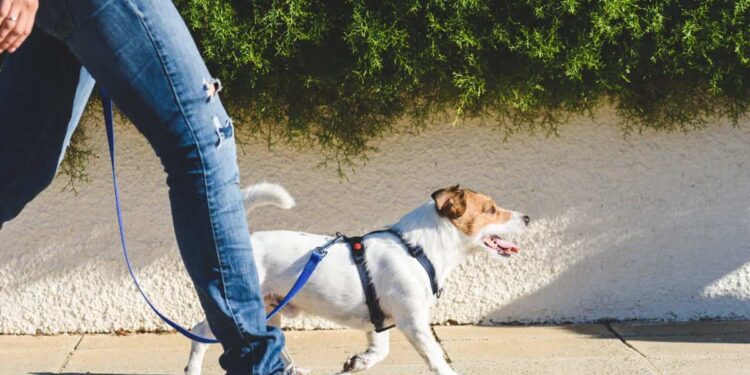Loose leash walking is an essential skill for every dog owner aiming for enjoyable strolls with their canine companion. Mastering this skill helps to ensure comfortable and stress-free walks in your neighborhood and beyond. In this blog post, we will explore techniques and tips for effectively training your dog for loose leash walking.
The Importance of Loose-Leash Walking
A dog that pulls on the leash can pose risks not only to themselves but also to their owner. It can lead to injuries and an unpleasant walking experience. Loose leash walking allows both the owner and the dog to enjoy a harmonious and leisurely walk while maintaining control and safety.
Understanding Leash Reactivity
Before we dive into the methods of teaching loose leash walking, it is essential to understand leash reactivity. This term refers to a dog’s overreaction and unwanted behaviors like lunging, barking, and pulling when on a leash. Identifying the root causes of leash reactivity, such as fear, over-excitement, or frustration, can help develop a tailor-made training plan for your dog. For instance, working with Lancaster Golden Retriever puppies can help you better understand their temperament and behavior from an early stage, allowing you to address any potential leash reactivity issues effectively.
Introducing the Leash and Collar
Introduce your dog to the leash and collar slowly, creating a positive association with them. You can use treats, praise, and playtime as rewards for accepting the leash and collar. Gradually increase the leash’s length, ensuring your dog is comfortable and relaxed at each stage.
Creating Structure and Consistency
Develop a walking routine to create structure and consistency for your dog. This schedule helps them understand when to expect walks and maintain a regular pace. Ensure all family members who walk the dog follow the same techniques and commands for faster progress.
Setting the Foundation: Teach Basic Commands
A solid foundation in basic obedience commands is an excellent starting point for loose-leash walking. Here are some essential commands your dog should learn:
- Sit – Have your dog sit and stay calm before placing the leash on them.
- Heel – This command encourages your dog to walk alongside you, not too far ahead or behind.
- Watch Me – This command directs your dog’s attention to you, ensuring they remain focused on you during walks.
Handling Distractions
While practicing loose leash walking, you may encounter various distractions such as other dogs, animals, or people. Teaching your dog to ignore these distractions and remain focused on walking will create a calm and enjoyable experience for both of you. Use commands like ‘leave it’ or ‘watch me’ to help keep your dog’s interest in you and consider carrying high-value treats or toys to maintain their engagement during training.
Choosing the Right Equipment
Selecting the appropriate leash and collar for your dog is crucial for a successful loose leash walking experience. Opt for a fixed-length leash that allows you to maintain control but gives your dog enough freedom to explore. Meanwhile, ensure the collar is comfortable and fits well. Using a front-clip harness instead of a regular collar can also help reduce pulling.
Training with a Professional

If you struggle with teaching your dog loose leash walking or have concerns about their behavior, you might benefit from seeking assistance from a professional dog trainer. A certified trainer can evaluate your dog’s leash skills and offer personalized advice to help you achieve success. Additionally, they can guide managing leash reactivity and other behavioral issues that may arise during training.
Tips and Techniques for Loose Leash Walking
Below are some essential tips and techniques for effective loose-leash walking training:
- Start in a low-distraction environment – Begin training in a quiet area like your backyard. As your dog progresses, gradually introduce them to more challenging environments.
- Use positive reinforcement – Reward your dog with treats, praise, and playtime for maintaining a loose leash.
- Be patient and consistent – Each dog learns at its own pace. Consistency and patience ensure the best training outcomes.
- Practice makes perfect – Regularly practice with your dog to reinforce and maintain the loose leash walking skill.
Addressing Leash Pulling
In case your dog starts pulling, stop walking immediately, or change direction. Reward your dog when the leash becomes loose again. This method teaches your dog that pulling does not get them closer to their destination.
Mastering loose-leash walking is an invaluable skill for a comfortable and stress-free walking experience with your furry friend. Remaining patient, consistent, and positively reinforcing good behaviors are the keys to success in teaching your dog this essential life skill. With practice and dedication, you and your canine companion can enjoy enjoyable strolls for years to come.




